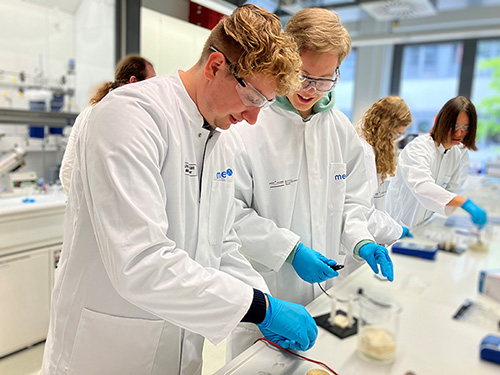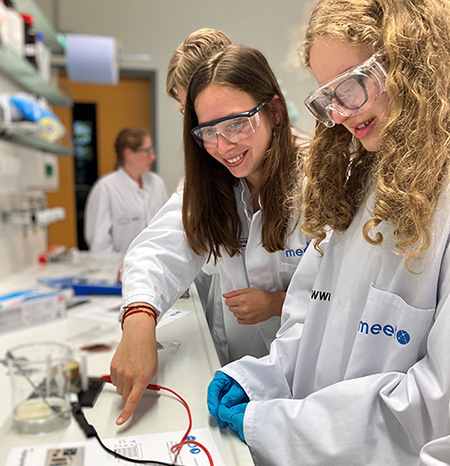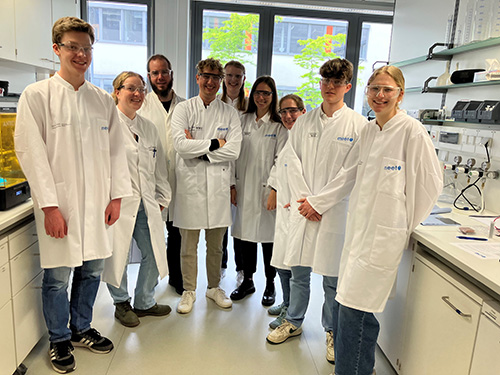Experiment and Learn: School Groups Discover the World of Battery Cells
Whether in drones, laptops or electric cars, battery cells can be found in numerous devices that make our everyday lives easier and more efficient. At this year's "A-level ... and now?" information day on Wednesday, May 22nd, organized by the Chemistry Student Group at the University of Münster, students were given an insight into the world of research. The focus was not only on theoretical knowledge, but also on an experiment that illustrated how a battery works.
How does a battery work? How many battery cells are there in an electric car? These and other questions were put to the students by staff from the Fraunhofer Research Institution for Battery Cell Production FFB, the MEET Battery Research Center at the University of Münster and the Helmholtz Institute Münster (HI MS) at Forschungszentrum Jülich. Together they gave an insight into battery research at the information day of the student council of chemistry and offered the students the opportunity for a personal exchange.
Jan-Darius Plöpst, research associate in the "Cell Design" department at Fraunhofer FFB, and Karin Sowa, PhD student at the MEET battery research center, kicked things off. They answered the question of how battery research in Münster is contributing to the further development of these technologies so that battery cells will be even more powerful and environmentally friendly in the future.
Afterwards, Jan-Darius Plöpst not only explained how a lithium-ion battery works in theory, but the participants also had the opportunity to take apart 3D-printed battery cells themselves to gain insight into the structure and components of a battery cell. They were also able to touch the materials used in a battery cell, such as the electrode foil.

Joana Flanse, research assistant in the Electrode Manufacturing group, presented how Alessandro Volta built the world's first battery with his experiment, before the participants took to the lab bench themselves. In the laboratories of the MEET Battery Research Center, they were able to build a Volta column and measure the increase in voltage with each additional layer. In addition, under the guidance of Rayan Guerdelli (Helmholtz Institute Münster of Forschungszentrum Jülich, HI MS) and Karin Sowa, shopping chips were printed in the lab using an SLA 3D printer. Stereolithography (SLA) is the first commercially available 3D printing technology that enables the production of parts and tools from functional polymer-based materials. Specifically, a UV laser is used to cure liquid photopolymer layers. An object - here the shopping chip - is built up layer by layer.
In addition to the exciting experiments and presentations, the students had the opportunity to ask questions about college and career opportunities, giving them valuable insight into their future career options.
Last modified:

